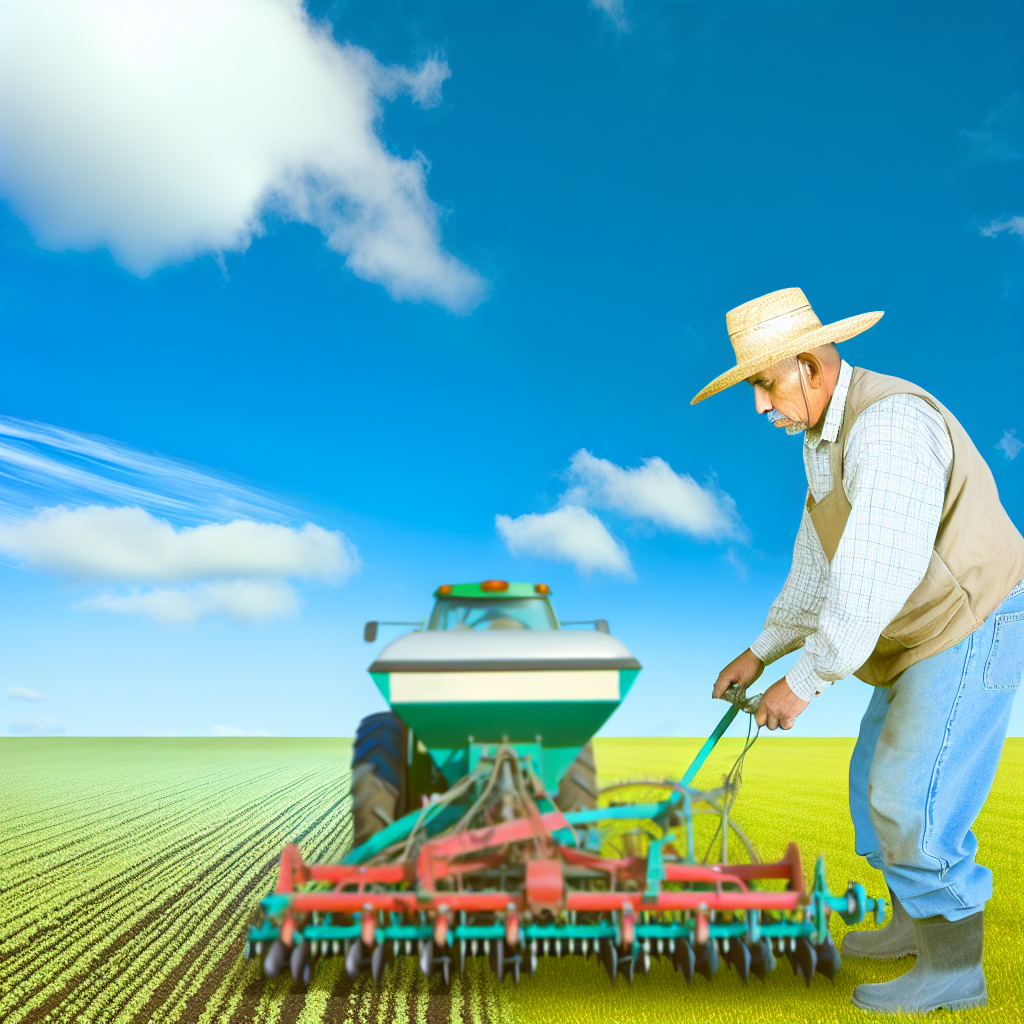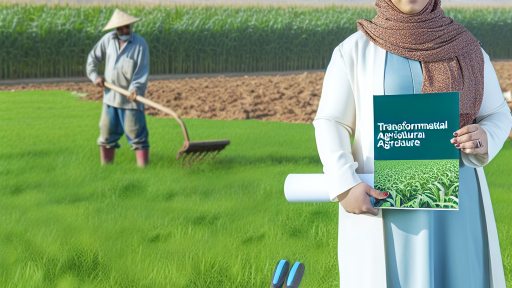Introduction to Conservation Programs and Their Objectives
Conservation programs aim to promote sustainable farming practices.
They focus on preserving natural resources while enhancing productivity.
Farmers adopt these programs to improve crop yields and soil health.
Additionally, they seek to mitigate the effects of climate change.
Conservation programs often include financial incentives for farmers.
These incentives encourage the adoption of environmentally friendly practices.
As a result, farmers implement soil conservation methods to reduce erosion.
The programs also advocate for water management techniques to conserve resources.
Moreover, they educate farmers about biodiversity and ecological balance.
This education helps farmers make informed decisions about land use.
Furthermore, conservation programs build resilience against extreme weather.
Farmers participating in these programs report improved long-term productivity.
The goals of conservation programs align with national agricultural policies.
By working together, farmers and conservationists enhance food security.
Overall, these initiatives foster a more sustainable agricultural landscape.
Transform Your Agribusiness
Unlock your farm's potential with expert advice tailored to your needs. Get actionable steps that drive real results.
Get StartedOverview of Farm Productivity
Definitions of Farm Productivity
Farm productivity refers to the efficiency of production on agricultural lands.
It encompasses the amount of output produced from a given input.
Common outputs include crops, livestock, and dairy products.
Inputs typically consist of labor, capital, and natural resources.
Measuring productivity helps farmers assess their operations.
This measurement informs decisions about resource allocation and management.
Metrics for Measuring Farm Productivity
Several key metrics gauge farm productivity effectively.
One primary metric is yield, which quantifies output per area.
For example, yield can be measured in bushels per acre.
Another relevant metric is labor efficiency, which examines output per labor hour.
Additionally, return on investment (ROI) evaluates economic performance.
Farmers also consider input efficiency ratios to analyze resource use.
Importance of Productivity Measurement
Measuring productivity is crucial for sustainable agricultural practices.
It enables farmers to maximize output while minimizing environmental impacts.
Furthermore, effective measurement supports better financial decision-making.
It allows farmers to identify areas for improvement and innovation.
Ultimately, understanding productivity shapes the future of agriculture.
Historical Context of Conservation Programs
Evolution of Conservation Programs
Conservation programs have evolved over several decades.
Initially, these programs focused on soil preservation.
They aimed to combat the effects of the Dust Bowl in the 1930s.
Over time, the scope expanded to include water conservation.
Furthermore, biodiversity protection became a priority.
Government Involvement
Governments worldwide play a crucial role in conservation efforts.
In the United States, the Soil Conservation Service was established in 1935.
Showcase Your Farming Business
Publish your professional farming services profile on our blog for a one-time fee of $200 and reach a dedicated audience of farmers and agribusiness owners.
Publish Your ProfileThis agency marked a significant federal commitment to conservation.
Later, programs like the Conservation Reserve Program emerged.
These initiatives provide financial incentives to farmers.
Modern Conservation Initiatives
Today, conservation programs encompass various strategies.
They include sustainable land management techniques.
Also, programs are increasingly focused on climate resilience.
Farmers implement practices that enhance soil health and productivity.
Moreover, they prioritize crop rotation and cover cropping.
Impact on Agricultural Practices
Conservation programs encourage innovative farming methods.
Farmers adopt precision agriculture to reduce waste.
Additionally, agroforestry practices have gained popularity.
These approaches support both productivity and environmental health.
As a result, farmers witness improved yields and profitability.
You Might Also Like: Adapting Farm Operations To New Import Export Tariffs
Case Studies Exemplifying the Impact of Conservation Programs on Specific Farming Practices
Drip Irrigation in Organic Farms
Julia Martinez operates an organic farm in California.
She implemented a drip irrigation system last year.
This system reduced water usage significantly.
Consequently, her crop yields increased by 15%.
Overall, the system enhanced the farm’s sustainability.
Cover Cropping Techniques for Soil Health
Mike Thompson practices cover cropping on his soybean farm.
He adopted this technique to improve soil health.
Since implementing cover crops, Mike observed less soil erosion.
Moreover, his soil organic matter increased by 20%.
This change positively affected his crop productivity.
Crop Rotation in Family Farms
The Rogers family farm in Iowa uses crop rotation.
They alternate corn and soybeans each year.
This practice reduces pest populations naturally.
As a result, their use of pesticides dropped by 30%.
Crop diversity has improved both yield and soil quality.
Agroforestry Practices in Livestock Management
Sam Johnson manages his livestock using agroforestry methods.
He integrates trees with pastureland on his farm.
This system offers shade for animals while enhancing biodiversity.
Consequently, his pasture quality improved, leading to better health for livestock.
Additionally, it provided an extra source of income through timber sales.
Conservation Tillage in Large Scale Farming
Emily Chen practices conservation tillage on her wheat farm.
This method minimizes soil disturbance, preserving soil structure.
Emily has noticed a decrease in fuel costs due to reduced tillage passes.
Furthermore, her crop yield has remained stable over the years.
These benefits demonstrate the effectiveness of conservation tillage.
Benefits of Integrated Pest Management
Robert Anderson employs integrated pest management (IPM) in his vegetable crops.
Showcase Your Farming Business
Publish your professional farming services profile on our blog for a one-time fee of $200 and reach a dedicated audience of farmers and agribusiness owners.
Publish Your ProfileIPM techniques focus on ecological balance and pest resistance.
Since adopting IPM, Robert’s pesticide costs decreased by 40%.
Additionally, this approach has improved the overall health of his crops.
Moreover, consumers appreciate the reduced chemical residues on produce.
Gain More Insights: Key Steps To Achieve Pesticide Compliance
Economic Analysis: Cost-Benefit Considerations of Implementing Conservation Programs
Understanding Conservation Programs
Conservation programs focus on sustainable land-use practices.
These initiatives aim to protect natural resources and improve farm productivity.
Farmers often participate in these programs to receive financial assistance.
Cost Factors of Implementation
Implementing conservation practices incurs initial costs.
Farmers may need to invest in new equipment and training.
Additionally, land preparation and management require resources and time.
Nonetheless, these costs can lead to long-term savings.
Benefits of Conservation Programs
Conservation programs offer numerous economic advantages.
They can enhance soil health, increasing crop yields over time.
Healthy soils improve water retention and reduce erosion risks.
Moreover, farmers can access premium markets for sustainably grown products.
Financial Incentives and Support
Many government and nonprofit organizations offer financial incentives.
These grants can offset the initial costs of conservation efforts.
Furthermore, tax benefits may apply for participating farmers.
Such incentives encourage more farmers to adopt sustainable practices.
Evaluating Long-Term Outcomes
Long-term assessments show positive trends for farms involved in conservation.
Increased biodiversity on farms leads to more resilient ecosystems.
Farmers report improved productivity and lower input costs over time.
The economic benefits often outweigh the initial expenses.
Explore Further: Strategies For Reducing Chemical Dependency In Agriculture

Environmental Benefits
Soil Health Improvement
Conservation programs significantly enhance soil health across various agricultural landscapes.
These initiatives encourage practices that reduce soil erosion effectively.
Moreover, they promote the use of cover crops which improve soil structure.
Healthy soils retain moisture better, benefiting crop yields in dry seasons.
Sustainable practices also foster the presence of essential microorganisms.
These organisms play a critical role in nutrient cycling and soil fertility.
Biodiversity Enhancement
Conservation programs support a rich diversity of plant and animal species.
These programs create habitats that nurture beneficial insects and wildlife.
Additionally, biodiversity contributes to more resilient ecosystems.
Diverse ecosystems can adapt more readily to environmental changes.
This adaptability increases agricultural productivity over time.
Water Quality Protection
Implementing conservation practices improves water quality in surrounding ecosystems.
Programs often focus on reducing runoff and preventing contamination.
Healthy soils filter pollutants, keeping waterways clean and safe.
Effective management of agricultural landscapes supports surrounding aquatic life.
Showcase Your Farming Business
Publish your professional farming services profile on our blog for a one-time fee of $200 and reach a dedicated audience of farmers and agribusiness owners.
Publish Your ProfileClimate Change Mitigation
Conservation programs help in mitigating climate change effects.
They promote carbon sequestration through sustainable land management techniques.
Practices such as agroforestry and no-till farming effectively capture carbon dioxide.
By enhancing carbon stocks, these approaches reduce greenhouse gas emissions.
You Might Also Like: Best Practices for Meeting Animal Welfare Standards on Farms
Challenges Faced by Farmers in Adopting Conservation Practices
Financial Constraints
Many farmers encounter financial constraints when implementing conservation practices.
The initial costs for new technology and methods can be high.
Additionally, limited access to financial assistance further complicates the situation.
Lack of Information
A significant barrier arises from the lack of information about conservation techniques.
Many farmers are unaware of the benefits of these practices.
This gap in knowledge hinders informed decision-making.
Practical Implementation Issues
Farmers often face practical challenges during the implementation phase.
For instance, adapting existing equipment can be cumbersome.
Moreover, coordinating with multiple stakeholders can create confusion.
Cultural Resistance
Cultural resistance also plays a role in the slow adoption of conservation practices.
Long-standing farming traditions are hard to change.
Some farmers prefer familiar methods over new, untested approaches.
Time Constraints
Time constraints are a significant challenge for farmers.
Many farmers struggle to integrate conservation practices into their busy schedules.
As a result, they prioritize short-term productivity over long-term sustainability.
Regulatory Barriers
Regulatory barriers can impede the adoption of conservation strategies.
Farmers may find compliance with various regulations difficult.
This often leads to frustration and non-participation in conservation programs.
Future Trends in Conservation Programs
Increased Integration of Technology
Farmers will increasingly adopt technology-driven conservation practices.
Precision agriculture tools will become more widespread.
These technologies will enhance resource efficiency and minimize waste.
Moreover, data analytics will guide better decision-making in conservation efforts.
Focus on Soil Health
Improving soil health will remain a key goal of conservation programs.
Healthy soils lead to higher crop yields and resilience against climate change.
Furthermore, practices like cover cropping will gain popularity.
These practices enhance organic matter and microbial activity in the soil.
Support for Biodiversity
Biodiversity conservation will play a crucial role in agricultural productivity.
Diverse ecosystems increase farmer resilience and reduce pest pressures.
Programs promoting agroforestry and crop rotation are likely to expand.
These strategies help maintain ecological balance while boosting yields.
Emphasis on Sustainable Water Management
Water conservation will become increasingly important in farming.
Farmers will implement strategies to reduce water use while maintaining productivity.
Innovations like drip irrigation systems will see wider adoption.
These systems maximize efficiency and minimize water loss.
Government Incentives and Policies
Government initiatives will shape the future of conservation programs.
Showcase Your Farming Business
Publish your professional farming services profile on our blog for a one-time fee of $200 and reach a dedicated audience of farmers and agribusiness owners.
Publish Your ProfileIncentives for sustainable practices will encourage broader adoption.
Policies promoting resilient farming practices will gain momentum.
Furthermore, education will play a key role in informing farmers about benefits.
Community and Collaborative Efforts
Collaboration among farmers will foster knowledge sharing and innovation.
Community-led conservation initiatives can enhance local ecosystems.
Partnerships with organizations will provide additional resources and expertise.
Such collaborations will lead to improved economic and environmental outcomes.
Additional Resources
What is the Farm Bill? – National Sustainable Agriculture Coalition
Long-Term Trends in Agricultural Production and the Nation’s …




